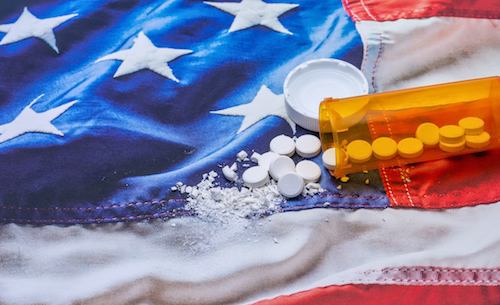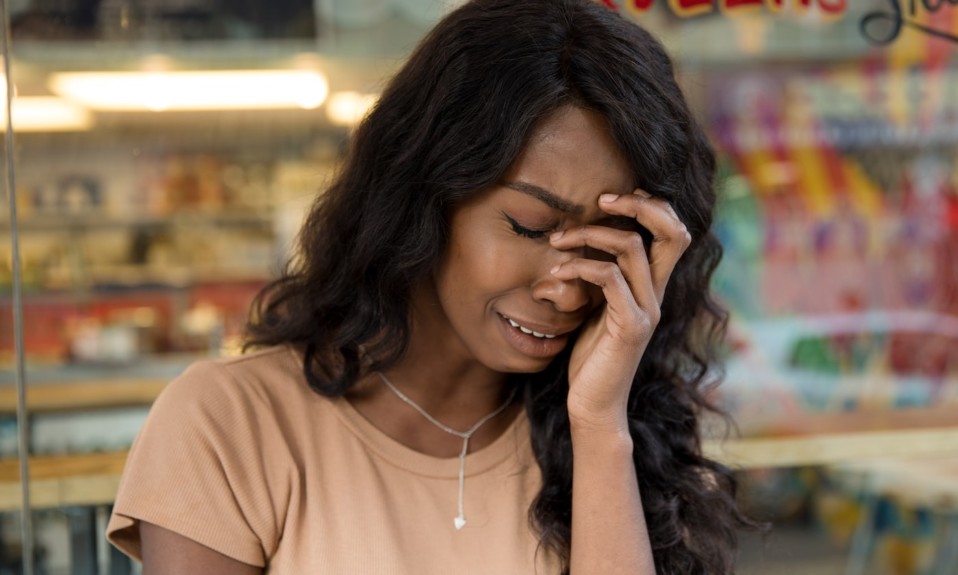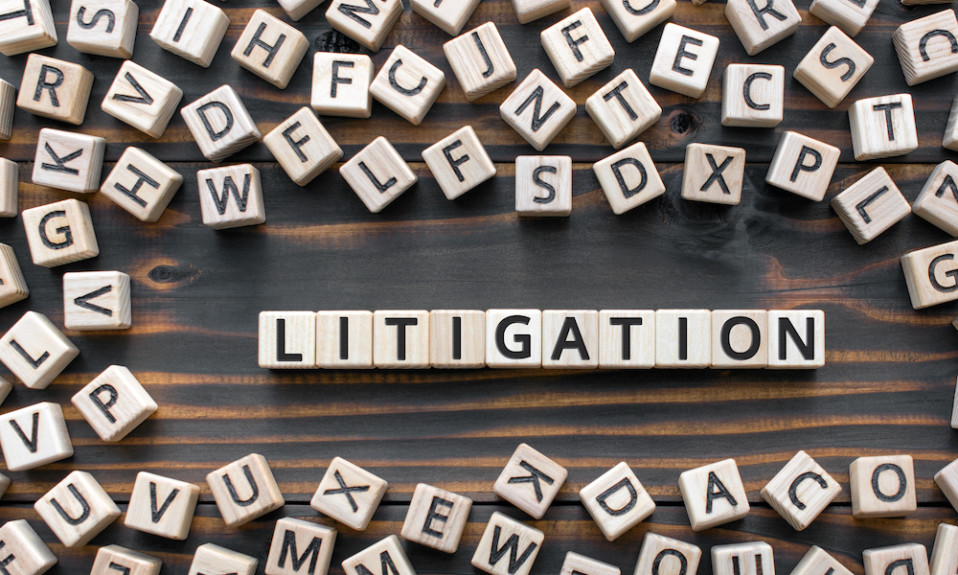The landmark $26 billion deal that was announced last week raises as many questions as it answers
By Mark Mravic
The landmark $26 billion opioid settlement announced last week could be a major step toward addressing a national crisis that is getting more dire every year. It’s a sweeping agreement intended to bring costly and time-consuming lawsuits to a close and get money to states and localities fast. But many questions remain, as do a host of variables that will ultimately determine just how much cash will enter the national pipeline for desperately needed opioid treatment and prevention.
In national multidistrict litigation (MDL) that has been in the works since 2017, some 4,000 groups—including states, counties, cities and towns, tribal communities and other jurisdictions—have filed suit against drug manufacturers, distributors and pharmacies for their role in fueling the opioid epidemic, which has ruined communities, shattered families and cost more than 500,000 lives in the past two decades. Litigants accuse manufacturers such as Purdue Pharmaceutical and Johnson & Johnson of illegally marketing and selling their highly addictive pain medications; distributors such as McKesson, AmerisourceBergen and Cardinal Health—the “Big Three”—of pumping hundreds of millions of doses of opioids into unwitting communities, with few or no checks; and dispensers such as Walmart, CVS and Walgreens of knowingly filling millions of fraudulent prescriptions and failing to report suspicious orders.
If approved, last week’s settlement will resolve the litigation involving the Big Three and Johnson & Johnson that comes under the MDL. States, municipalities and others that don’t join the settlement, however, can continue with suits against the companies. In addition, legal action is proceeding against other companies not party to the settlement. Indeed, trials in New York, California and West Virginia are ongoing, and several others across the country are slated to begin in the coming months.
Within each state, thousands of municipalities, tribes and other local jurisdictions must be persuaded to sign on. For a sense of the scale of that task, Alabama alone has 248 ‘litigating subdivisions,’ ranging from counties and towns to hospitals and clinics.”
The urgency for action is evident. According to the Centers for Disease Control and Prevention (CDC), more than 93,000 Americans died of drug overdoses in 2020, an unprecedented rise of nearly 30%. “Nothing can undo the devastating loss of life caused by the opioid epidemic, or stop the grief it has caused for its victims and their families,” California attorney general Rob Bonta said in a statement, “but this proposed settlement represents one step in the process of healing our communities Along with our coalition partners, our office has worked to hold accountable bad actors who fueled this public health crisis—including those who produced, distributed, and marketed these dangerous drugs.”
But not everyone is on board with the opioid settlement, which could spell difficulty down the road.
Details of the Opioid Settlement
Attorneys general from 14 states—California, Colorado, Connecticut, Delaware, Florida, Georgia, Louisiana, Massachusetts, New York, North Carolina, Ohio, Pennsylvania, Tennessee and Texas—announced the settlement on July 21. It requires McKesson, AmerisourceBergen and Cardinal Health to pay as much as $21 billion over the next 17 and a half years; Johnson & Johnson will pay up to $5 billion over nine years, with $3.7 billion of that coming in the first three years. Actual amounts will be determined by a complex formula based on the severity of the crisis in particular states and the degree of participation among their localities. Some $2.2 billion is earmarked for private lawyers brought in to represent some states, counties and cities. (A previously negotiated agreement had been scuttled because the amount set aside for lawyers was too low.) First installments could begin in two months.
In addition to the monetary award, the opioid settlement spells out the companies’ obligations to monitor distributions and prevent abuse. The three distributors must:
- Establish a centralized independent clearinghouse to provide all three distributors and state regulators with aggregated data and analytics about where drugs are going and how often, eliminating blind spots in the current systems used by distributors;
- Use data-driven systems to detect suspicious opioid orders from customer pharmacies;
- Terminate customer pharmacies’ ability to receive shipments, and report those companies to state regulators, when they show certain signs of diversion;
- Prohibit shipping and report suspicious opioid orders;
- Prohibit sales staff from influencing decisions related to identifying suspicious opioid orders; and
- Require senior corporate officials to engage in regular oversight of anti-diversion efforts.
Johnson & Johnson must:
- Stop selling opioids for 10 years;
- Not fund or provide grants to third parties for promoting opioids;
- Not lobby on activities related to opioids; and
- Share clinical trial data under the Yale University Open Data Access Project.
In exchange, the deal would release the drug companies from further civil liability in the jurisdictions that sign on. The companies have already accounted for the settlement figures in recent financial filings. They deny any wrongdoing.

With 14 states having agreed, remaining states were given 30 days to endorse the settlement. The deal requires a “critical mass” of states to join for it to go ahead, though the exact number that need to sign up was not immediately clear. Experts believe the announcement itself signals that enough states have already given their go-ahead behind the scenes. North Carolina attorney general Josh Stein said he expects at least 40 states to agree. For full payouts, according to Reuters, the agreement needs support from at least 48 states, 98% of litigating local governments and 97% of jurisdictions that have yet to sue.
Indeed, within each state, thousands of municipalities, tribes and other local jurisdictions must be persuaded to sign on. For a sense of the scale of that task, Alabama alone has 248 “litigating subdivisions,” ranging from counties and towns to hospitals and clinics. The more of those that join the settlement, the larger the payout for a state. Florida’s total could be $1.6 billion, Pennsylvania’s about $1 billion and Delaware’s $300 million—but only if the maximum number of jurisdictions agree. States have 150 days to enroll their jurisdictions.
“The lawyers will do a lot of the strong-arming of their clients, the localities, into agreeing to the settlements,” University of Georgia law professor Elizabeth Burch told The New York Times, “because if the deal doesn’t go through, the lawyers won’t get paid.”
Pushback Against the Opioid Settlement
As with other such agreements, those deciding whether or not to join in must weigh the promise of a relatively quick influx of cash to fund treatment and prevention against the possibility of winning more money in separate litigation—or, on the other hand, of losing that litigation or seeing the money from distributors dry up. In Indiana, municipalities representing more than half the population have already opted out of any settlement. They’re unsatisfied with allocation plans that would give local jurisdictions just 15% of settlement funds. According to the Indiana attorney general, if those localities don’t rejoin, the state stands to lose up to $230 million of its potential $507 million payout.
West Virginia, the state hardest hit by the opioid crisis, had already announced in November that it would not be part of a global deal. “West Virginia fully supports the national settlement on behalf of every other state,” Paul T. Farrell, lead plaintiff litigator in the MDL, said. “Everybody understands that any national settlement does not account for West Virginia. There’s no dispute about that.” The state is proceeding with a federal trial against the Big Three in which it is seeking a reported $2.6 billion—about 10 times what it might have gotten in the global settlement. Closing arguments in that trial are scheduled for this week.
The settlement is, to be blunt, not nearly good enough for Washington. … We are looking forward to walking into a Washington state courtroom to hold these companies accountable for their conduct. Washington families devastated by the opioid epidemic deserve their day in court.”—Washington attorney general Bob Ferguson
Also opting out is the state of Washington. Its attorney general, Bob Ferguson, said that rather than agree to the settlement, which would have provided Washington with a maximum of $527 million spread out over 18 years, he’s pushing ahead with the state’s suit against the drug distributors, scheduled to begin in September. His office said Washington’s share of the proposed settlement would not be a “transformative” amount and that “jurisdictions that have gone to trial against these companies have done far better than this agreement.”
“The settlement is, to be blunt, not nearly good enough for Washington,” Ferguson said in a statement. “It stretches woefully insufficient funds into small payments over nearly 20 years, to be shared among more than 300 Washington jurisdictions. We are looking forward to walking into a Washington state courtroom to hold these companies accountable for their conduct. Washington families devastated by the opioid epidemic deserve their day in court. We intend to give it to them.”
And in a sign of the potential complications involved in getting jurisdictions on board—bitterness toward drug companies, mistrust of state governments, partisan differences— Philadelphia district attorney Larry Krasner lashed out at the deal in a fiery sidewalk press conference the morning after the announcement. Saying he was filing suit against the state attorney general, he insisted that the city’s own lawsuits against opioid companies would continue. “It’s troubling that the AG’s office seeks to allow these opioid defendants to escape real accountability,” Krasner said, adding that manufacturers, distributors and dispensers “systematically poisoned Philadelphians for years” and should face the consequences.
Calling the city’s share of the opioid settlement, an estimated $5 million to $8 million per year, woefully insufficient, Krasner added, “We are not going to accept a settlement that is a sellout. And from what I see, this is a sellout. The money is too low, the payments are too slow, and the money may never show”—the last a reference to the possibility that the companies could go bankrupt or might not be sufficiently profitable in a particular year to trigger payments.
In addition, Krasner, a Democrat, expressed little faith in the Pennsylvania state legislature, currently in Republican control, to apportion payouts fairly. “This money doesn’t come directly to Philadelphia,” he intoned. “This money goes through the hands of state officials and state agencies that have made it clear that they don’t want to fund Philadelphia the way they fund other parts of this state. … [It goes] through the hands of people who would like to recount the last election. … They seem to have a funny sense of math.”
Some on the advocacy side also weren’t thrilled with the announcement. “My initial reaction, to be honest, is disappointment,” Randy Anderson of Bold North Recovery in Minneapolis told the Associated Press. “We were expecting numbers in the hundreds of billions. Not two digits but three digits. I spent five years locked up because I sold drugs to feed my disease. … I went to prison for a long time because of that. This doesn’t, to me, discourage this from happening again, because no one is going to prison for this.”

Indeed, the settlement hardly amounts to a withering financial hit for the drug companies. McKesson, ranked seventh in the Fortune 500, AmerisourceBergen (eighth) and Cardinal Health (14th) generated a combined $573 billion in revenues in 2020. Spread over 18 years, the settlement will cost those companies a maximum of about $1.16 billion annually—about two-tenths of 1% of their combined yearly revenue in 2020 dollars. The CDC estimates the total economic burden of opioid misuse and fatal overdoses at more than $1 trillion a year.
Stocks for the four companies involved in the settlement were up about 3% in the first five days after the announcement.
Cautionary Tales
One critical aspect of the settlement is the degree to which the funds will be spent specifically on opioid remediation. No one wants a recurrence of what happened with the landmark 1998 tobacco settlement, which guaranteed states a minimum of $206 billion over the first 25 years to fund anti-smoking campaigns and public health programs and promised annual payments in perpetuity.
That settlement included no specifics about how individual states must allocate the funds and no enforcement mechanism if the money was spent elsewhere. As a result, much of the tobacco money over the years has gone to balance state budgets, fund pet infrastructure projects and provide money for a host of other issues unrelated to smoking. The Campaign for Tobacco Free Kids estimates that of the $26.9 billion states received from the tobacco settlement and tobacco taxes in fiscal year 2021, just 2.4% was earmarked for smoking prevention and cessation.
Also problematic is that many states took their tobacco money up front, issuing bonds against future payments. A 2014 study by Jim Estes of Cal State San Bernardino found that 12 states and territories that issued $22.6 billion in bonds, deferring interest payments for up to 50 years, received just $573 million in cash. And because settlement payments—and hence bond values—are affected by smoking rates, which have been trending downward, some arrangements put states, and investors, in the perverse position of cheering on the tobacco companies.
There’s also the more recent example of New York state’s portion of the national $600 million settlement with the McKinsey consulting group, which helped Purdue Pharma market OxyContin. Of the $32 million the state received in April, $11 million went to fund medication-assisted treatment (MAT) in state prisons, but the remaining $21 million was channeled into the state general fund. Governor Andrew Cuomo said that money was ultimately directed toward drug abatement—but in fact it merely supplanted previous funding at last year’s level, in essence freeing up that $21 million for Cuomo to spend elsewhere. Furious state legislators subsequently passed a law creating a “lock box” for future opioid settlement funds. Cuomo, chastened by the criticism, signed the bill in June—but only after some tweaks that gave his executive branch more power over where the money would go.
Everybody wants this money to go towards opioid abatement around the country. And I think this time what we have that we didn’t have before is a very strong position by all of the attorneys general, by the representatives of the counties and cities, and by the defendants, that this money should not be wasted.”—former Arizona attorney general Grant Woods to the AP
How to Allocate the Funds
While most everyone involved in the settlement professes that the funds should be directed toward opioid abatement, getting that done will be a lengthy and involved process. At least 30 states already have agreements, special funds and/or advisory councils in place or in the works to allocate money from opioid settlements. But others, such as Michigan and Vermont, are required by state law to place money in the general fund, to be allocated by the legislature.
And what about specifics? The settlement says that it is the “the intent” of the parties that funds go toward opioid remediation, and it stipulates that 85% of the amount in any given year be spent on that. Any funds not used on opioid mitigation must be identified and reported, and the distributors can go to arbitration to seek to reduce payments in a particular locality if they believe that the 85% threshold is not being met.
The opioid settlement also spells out a set of “core strategies” for states and other jurisdictions to pursue, and provides a list of “approved uses” for funds, focusing on evidence-based programs. The headings for that section of the settlement provide an idea of the range of remediation approaches it recommends. (Each is followed by a detailed description of specific treatment strategies and services.) Those headings include:
- Treat opioid use disorder
- Support people in treatment and recovery
- Connect people who need help to the help they need
- Address the needs of criminal justice-involved persons
- Address the needs of pregnant or parenting women and their families, including babies with neonatal abstinence syndrome
- Prevent overprescribing and ensure appropriate prescribing and dispensing of opioids
- Prevent misuse of opioids
- Prevent overdose deaths and other harms
- Educate first responders regarding appropriate practices when dealing with opioids
- Promote and support leadership, training and research into opioid abatement.
Three recent reports by independent non-government organizations provide further guidelines for policymakers and leaders in allocating opioid settlement money, touching on such aspects as infrastructure, public messaging and cost factors. Each of those reports stresses that funding must have guardrails to keep programs focused on opioid mitigation and geared toward evidence-based treatment, equity and transparency.
“Everybody wants this money to go towards opioid abatement around the country,” former Arizona attorney general Grant Woods, an architect of the 1998 tobacco settlement, told the AP. “And I think this time what we have that we didn’t have before is a very strong position by all of the attorneys general, by the representatives of the counties and cities, and by the defendants, that this money should not be wasted.”
To what extent that can be achieved remains to be seen. What’s clear is that the most complex civil litigation in U.S. history hasn’t gotten any less complex. And the story is far from over.
Top photo: Shutterstock; bottom photo: Patrick Weissenberg














